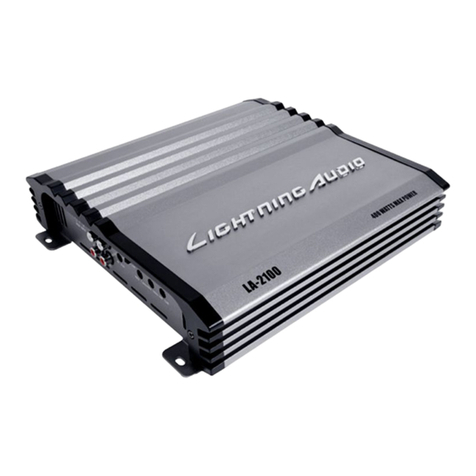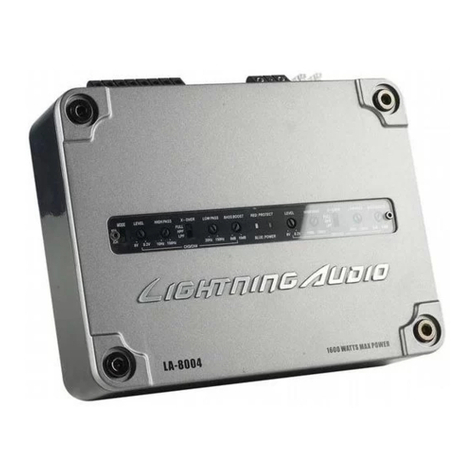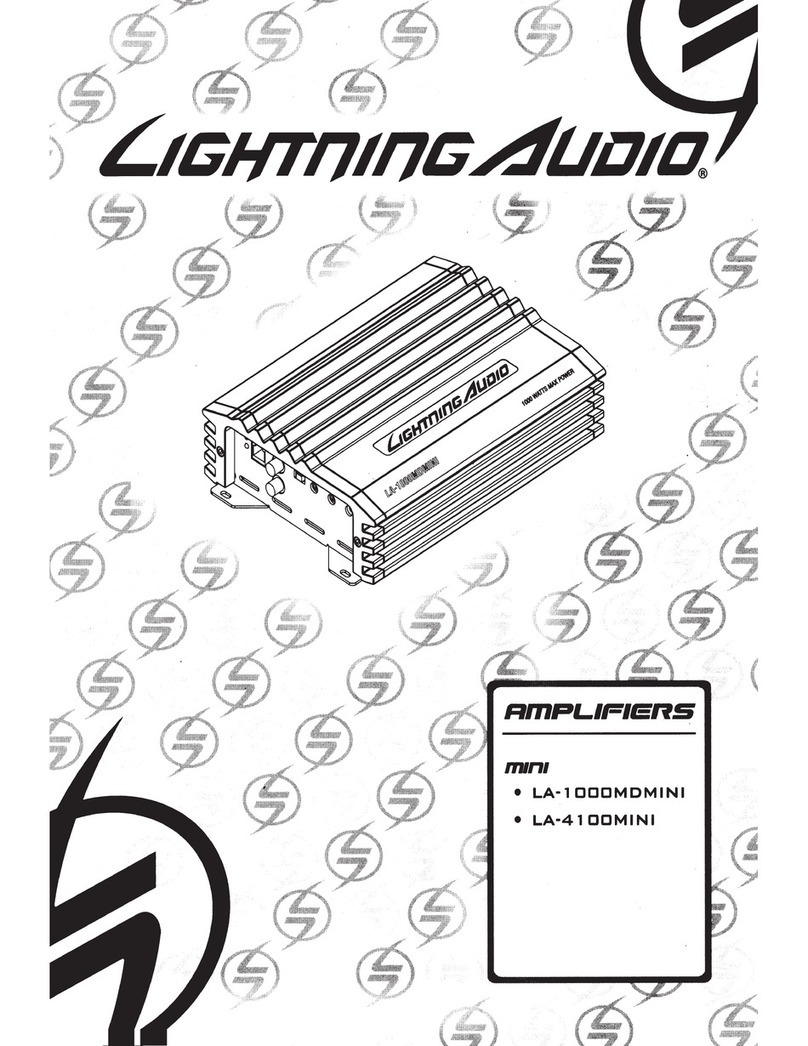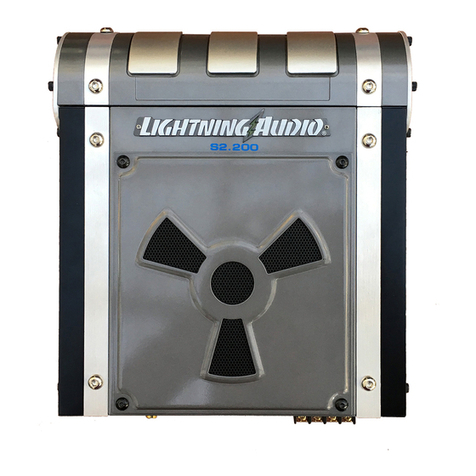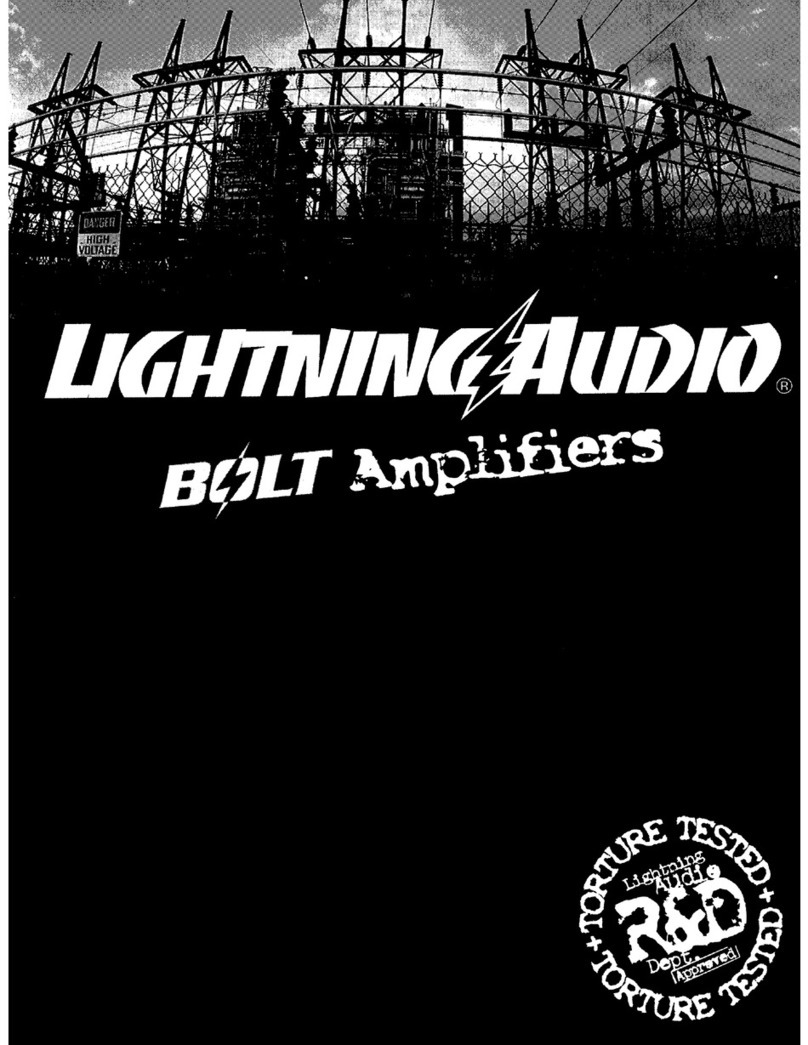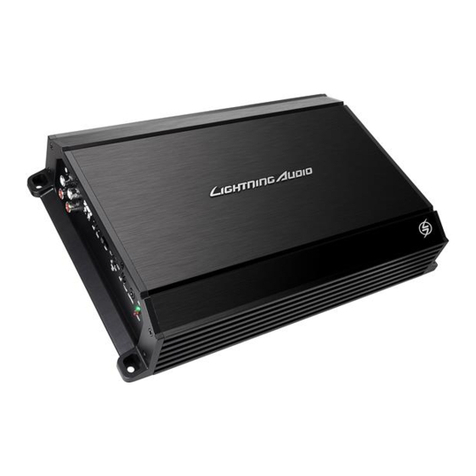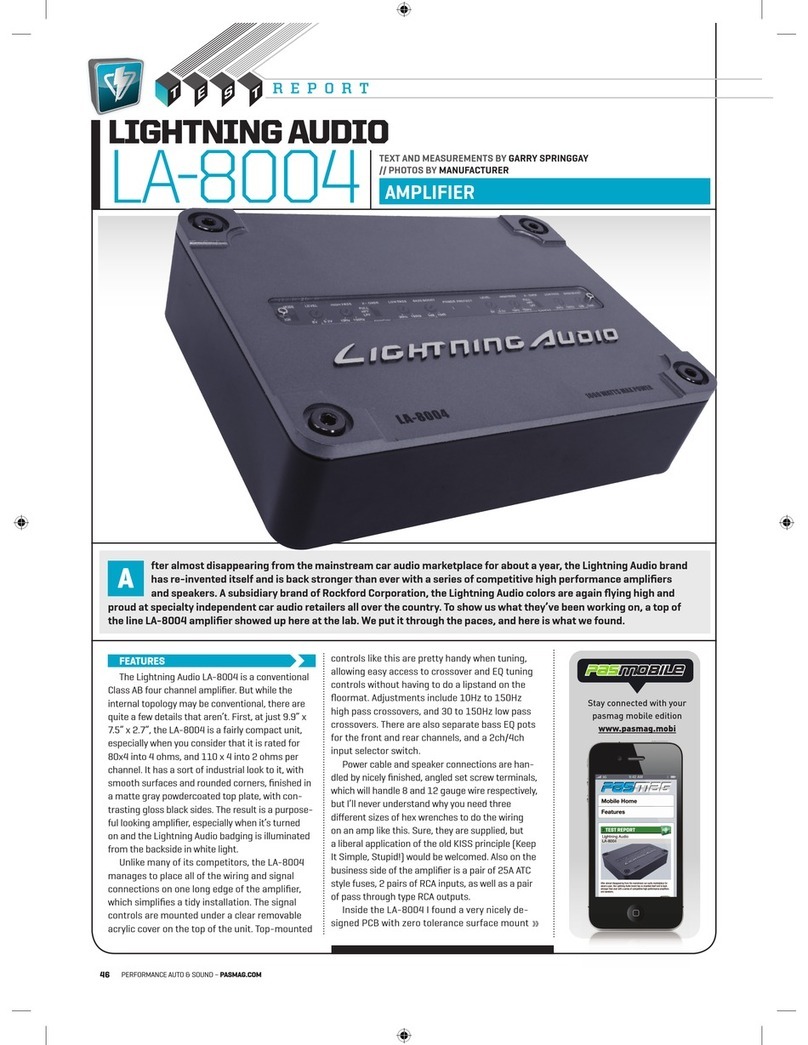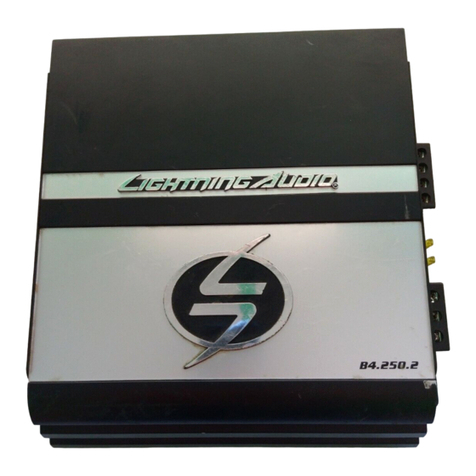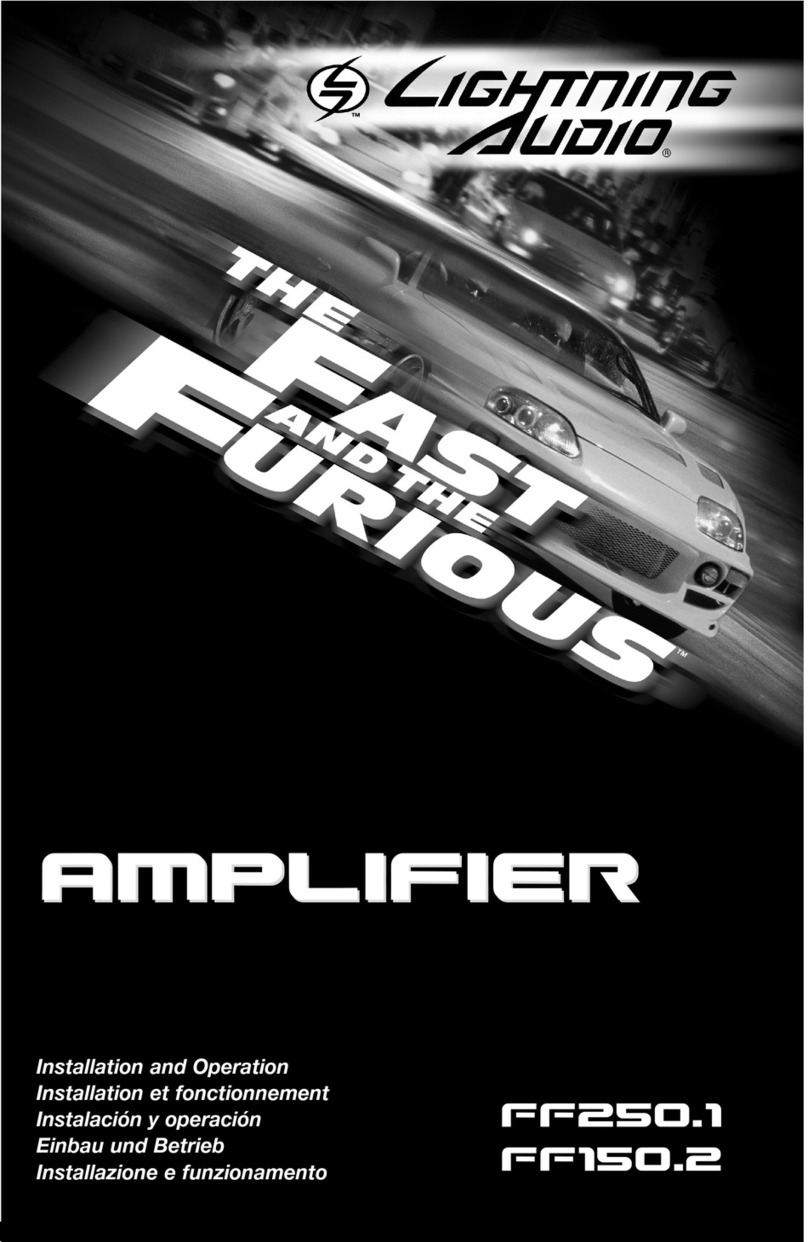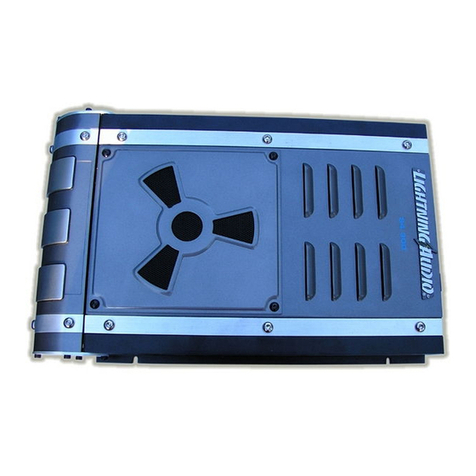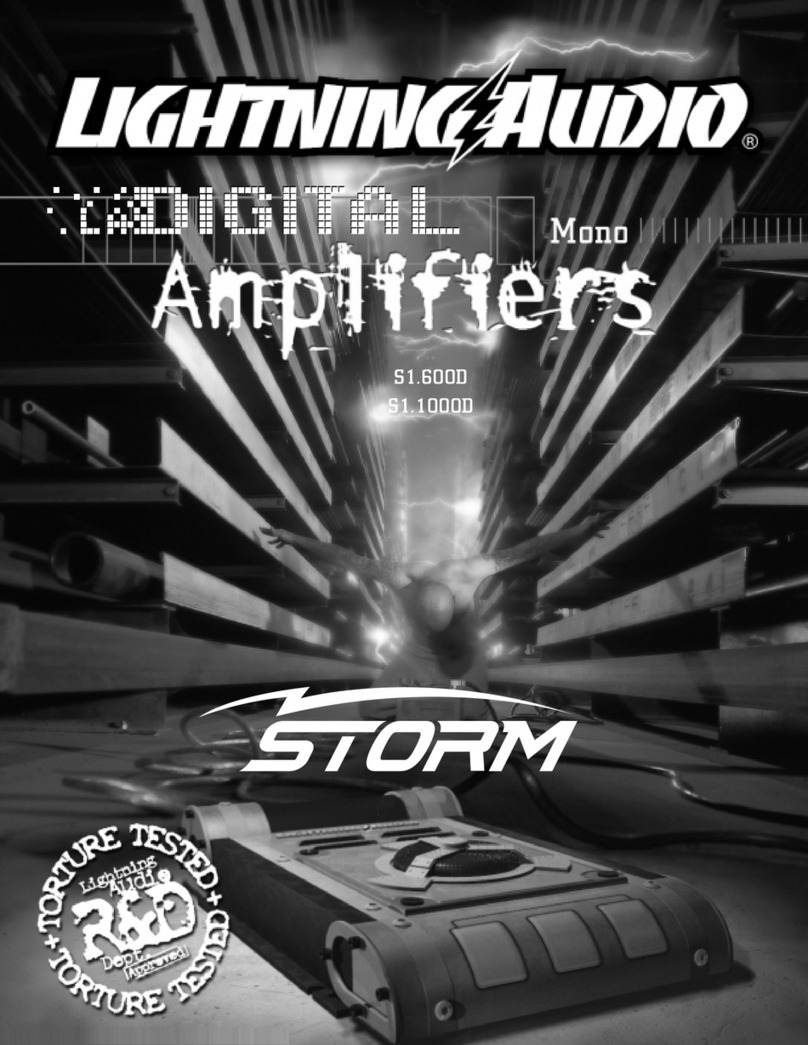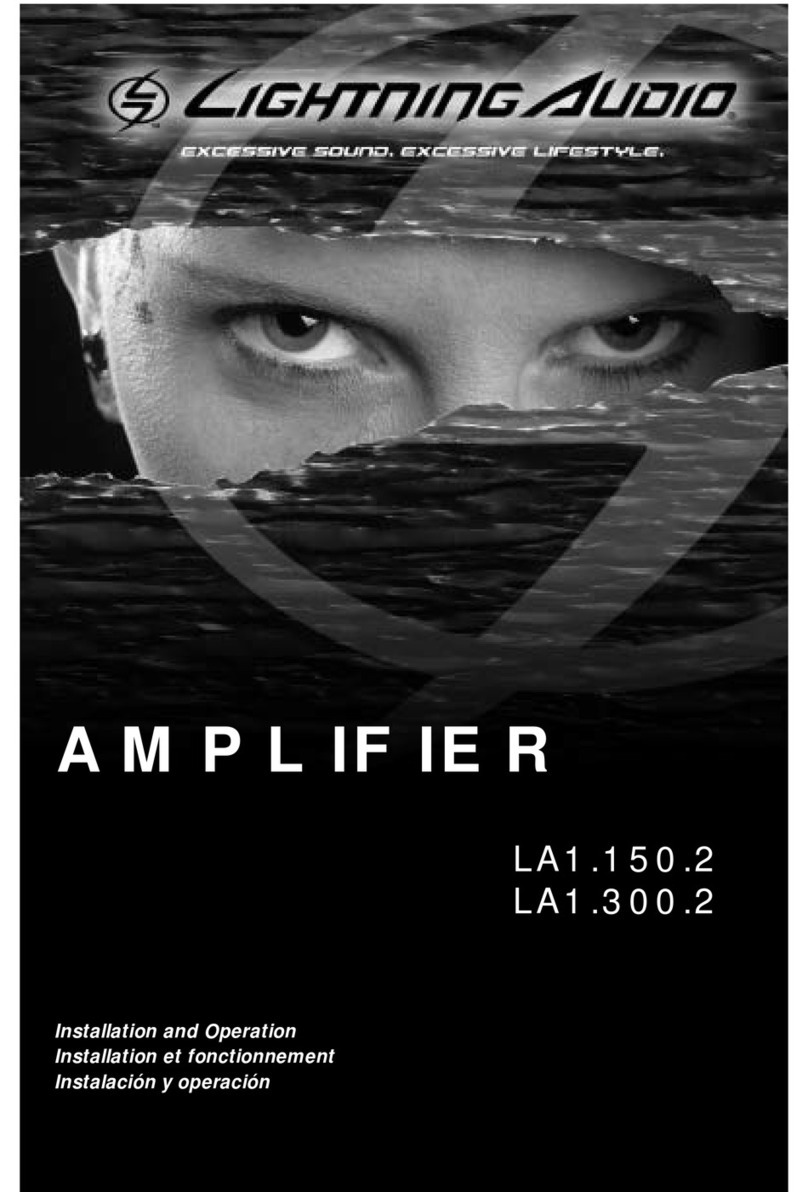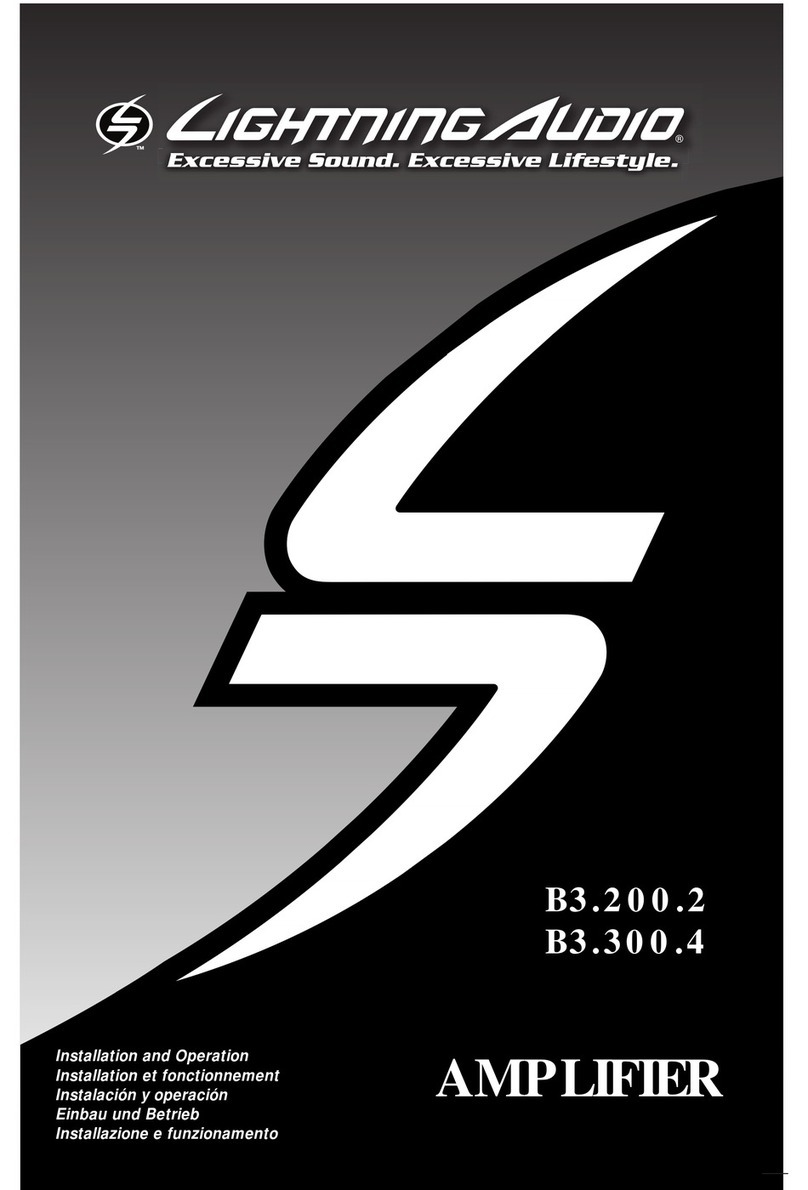6
Installation
WIRING THE SYSTEM
CAUTION: If you do not feel comfortable with wiring your new unit, please see
your local Authorized Lightning Audio Dealer for installation.
CAUTION: Before installation, disconnect the battery negative (-) terminal to
prevent damage to the unit, fire and/or possible injury.
CAUTION: Avoid running power wires near the low level input cables, antenna,
power leads, sensitive equipment or harnesses. The power wires
carry substantial current and could induce noise into the audio
system.
1. Plan the wire routing. Keep RCA cables close together but isolated from the amplifier's
power cables and any high power auto accessories, especially electric motors. This is done
to prevent coupling the noise from radiated electrical fields into the audio signal. When
feeding the wires through the firewall or any metal barrier, protect them with plastic or rubber
grommets to prevent short circuits. Leave the wires long at this point to adjust for a precise
fit at a later time.
2. Prepare the power cable for attachment to the amplifier by stripping 1/2" of insulation from
the end of the wire. Insert the bared wire into the B+ terminal and tighten the set screw to
secure the cable in place.
NOTE: The B+ cable MUST be fused 18" or less from the vehicle's battery. Install the fuseholder
under the hood and prepare the cable ends as stated above. Connections should be water
tight.
3. Trim the power cable within 18" of the battery and strip1/2"of insulation from the end of the
wire.
4. Strip 1/2" from the battery end of the power cable and crimp a large ring terminal to the
cable. Use the ring terminal to connect to the battery positive terminal. DO NOT install the
fuse at this time.
5. Prepare the grounding cable for attachment to the amplifier by stripping 1/2" of insulation
from the end of the wire. Insert the bared wire into the GND terminal and tighten the set
screw to secure the cable in place. Prepare the chassis ground by scraping any paint from
the metal surface and thoroughly clean the area of all dirt and grease. Strip the other end of
the wire and attach a ring connector. Fasten the cable to the chassis using a non-anodized
screw and a star washer.
6. Prepare the REM turn-on wire for connection to the amplifier by stripping 1/2" of insulation
from the wire end. Insert the bared wire into the REM terminal and tighten the set screw to
secure the cable into place. Connect the other end of the REM wire to a switched 12 volt
positive source. The switched voltage is usually taken from the source unit's accessory lead.
If the source unit does not have this output available, the recommended solution is to wire a
mechanical switch in line with a 12 volt source to activate the amplifier.
7. Securely mount the amplifier to the vehicle or amp rack. Be careful not to mount the
amplifier on cardboard or plastic panels. Doing so may enable the screws to pull out from
the panel due to road vibration or sudden vehicle stops.
8. Connect the source signal to the amplifier by plugging the RCA cables/high level inputs into
the input jacks at the amplifier.
9. Connect the speakers. Strip the speaker wires 1/2" and insert into the speaker terminal and
tighten the set screw to secure into place. Be sure to maintain proper speaker polarity. DO
NOT chassis ground any of the speaker leads as unstable operation may result.
10. Perform a final check of the completed system wiring to ensure that all connections are
accurate. Check all power and ground connections for frayed wires and loose connections
which could cause problems.
NOTE: Follow the diagrams for proper signal polarity.
CAUTION: The X1.400.2 and X1.800.4 amplifiers are not recommended for
impedance loads below 2Ωstereo and/or 4Ωbridged (mono).
